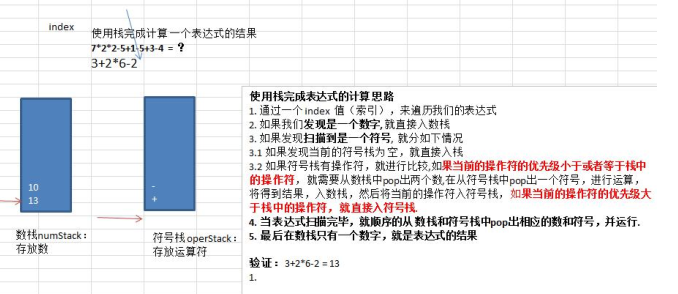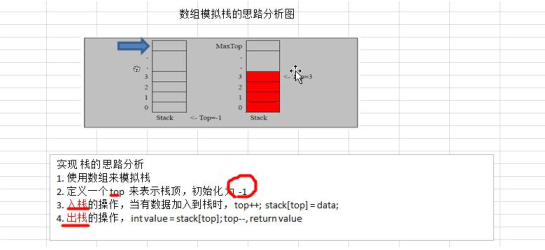1
2
3
4
5
6
7
8
9
10
11
12
13
14
15
16
17
18
19
20
21
22
23
24
25
26
27
28
29
30
31
32
33
34
35
36
37
38
39
40
41
42
43
44
45
46
47
48
49
50
51
52
53
54
55
56
57
58
59
60
61
62
63
64
65
66
67
68
69
70
71
72
73
74
75
76
77
78
79
80
81
82
83
84
85
86
87
88
89
90
91
92
93
94
95
96
97
98
99
100
101
| public class Calculator {
public static void main(String[] args) {
String expression = "300+2*2*2-1";
ArrayStack2 numStack = new ArrayStack2(10);
ArrayStack2 operStack = new ArrayStack2(10);
int index = 0;
int num1 = 0;
int num2 = 0;
int oper = 0;
int res = 0;
char ch = ' ';
String keepNum = "";
while(true) {
ch = expression.substring(index,index+1).charAt(0);
if(index == 0 && operStack.isOper(ch)) {
throw new RuntimeException("表达式不规范");
}
if(operStack.isOper(ch)) {
if(!operStack.isEmpty()) {
if(operStack.priority(operStack.peek())>=operStack.priority(ch)) {
num2 = numStack.pop();
num1 = numStack.pop();
oper = operStack.pop();
res = numStack.cal(num1, num2, oper);
numStack.push(res);
index--;
}else {
operStack.push(ch);
}
}else {
operStack.push(ch);
}
}else {
keepNum +=ch;
if(index == expression.length()-1) {
numStack.push(Integer.parseInt(keepNum));
}else {
if(operStack.isOper(expression.substring(index+1,index+2).charAt(0))) {
numStack.push(Integer.parseInt(keepNum));
keepNum = "";
}
}
}
index++;
if(index>=expression.length()) {
break;
}
}
while(true) {
if(operStack.isEmpty()) {
break;
}
num2 = numStack.pop();
num1 = numStack.pop();
oper = operStack.pop();
res = numStack.cal(num1, num2, oper);
numStack.push(res);
}
int pop = numStack.pop();
System.out.println(pop);
System.out.printf("计算: %s = %d",expression,pop);
}
|






